PRIMO PIANO
FIFA
Rules & Regulations
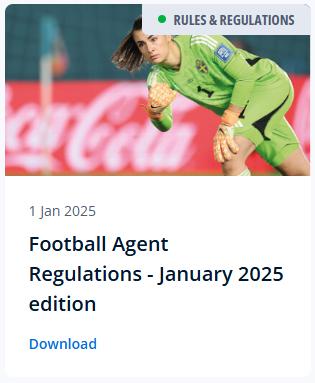
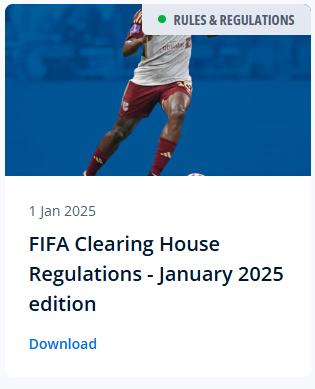
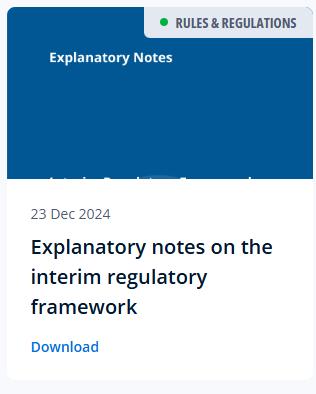
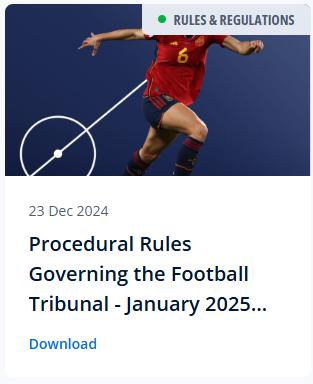
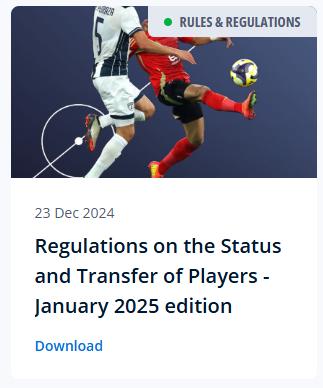
RDES 2024
CADUTA SU PISTA DA MOTOCROSS E RESPONSABILITÀ CIVILE:
ESISTE DAVVERO IL C.D. “PERICOLO ATIPICO”?
Nota a Sentenza, Cassazione civile, sez. III, 28 giugno 2024, n. 17942
di Gabriele Toscano
 Professore a contratto nel settore GIUR-01/A (Diritto privato) presso il Dipartimento di Giurisprudenza dell’Università di Siena. È altresì docente esperto presso la Scuola dello Sport del CONI. Ha conseguito il titolo di Dottore internazionale di ricerca in Diritto dei consumi nell’Università di Perugia ed in Diritto privato nell’Università di Salamanca, nell’ambito del programma congiunto tra i due atenei. Membro di varie Associazioni italiane e straniere nonché della Direzione della Rivista di Diritto ed Economia dello Sport.
Professore a contratto nel settore GIUR-01/A (Diritto privato) presso il Dipartimento di Giurisprudenza dell’Università di Siena. È altresì docente esperto presso la Scuola dello Sport del CONI. Ha conseguito il titolo di Dottore internazionale di ricerca in Diritto dei consumi nell’Università di Perugia ed in Diritto privato nell’Università di Salamanca, nell’ambito del programma congiunto tra i due atenei. Membro di varie Associazioni italiane e straniere nonché della Direzione della Rivista di Diritto ed Economia dello Sport.
Abstract
The aim of this paper is to analyse on a specific case concerning the liability of the manager of a motocross track in the event of an accident. In particular, the comment focuses on Article 2051 of the Civil Code (liability for things in custody) applied to this context. Pursuant to Article 2051 of the Civil Code, for the case law the liability of the manager of the track exists only in the presence of an “atypical danger”. In other words, the manager is liable if the accident is caused by an anomalous and unforeseeable situation that goes beyond the normal risks associated with the practice of motocross. If, on the other hand, the accident is attributable to a “typical danger”, or to an usual hazards of this sport, the manager’s liability is excluded.
Il lavoro si propone l’obiettivo di analizzare un caso specifico relativo alla responsabilità del gestore di una pista da motocross in caso di incidente. In particolare, il commento si concentra sull’interpretazione dell’art. 2051 c.c. (responsabilità per cose in custodia) applicata a questo contesto. Nello specifico la giurisprudenza stabilisce che la responsabilità del gestore della pista, ai sensi dell’art. 2051 c.c., sussiste solo in presenza di un “pericolo atipico”. In altre parole, il gestore è responsabile se l’incidente è causato da una situazione anomala e non prevedibile che esula dai normali rischi connessi alla pratica del motocross. Se invece l’incidente è riconducibile a un “pericolo tipico”, ovvero a un evento che rientra nella normale alea di questo sport, la responsabilità del gestore è esclusa.
Keywords
Civil liability – Motocross – Civil law – Art. 2051 c.c. – Atypical danger.
Responsabilità civile – Motocross – Diritto civile – Art. 2051 c.c. – Pericolo atipico.
Table of Content - Sommario
LO STADIO MEAZZA E L’INTERESSE CULTURALE:
QUALCHE RIFLESSIONE FRA STORIA E ATTUALITÀ
di Francesca Pulitanò
 Professoressa Associata, abilitata alle funzioni di Professore Ordinario, di Istituzioni di Diritto Romano e Fondamenti del Diritto Europeo presso il Dipartimento di Diritto Privato e Storia del Diritto dell’Università degli Studi di Milano.
Professoressa Associata, abilitata alle funzioni di Professore Ordinario, di Istituzioni di Diritto Romano e Fondamenti del Diritto Europeo presso il Dipartimento di Diritto Privato e Storia del Diritto dell’Università degli Studi di Milano.
Abstract
This essay explores the evolution of the legal frameworks governing sports buildings, beginning with their origins in ancient Rome, where monumental structures like amphitheaters and circuses reflected the socio-cultural and political priorities of the time. The analysis transitions to the contemporary context by examining the case of the Giuseppe Meazza Stadium in Milan. Currently, the planned demolition of this iconic structure is on hold, pending an investigation into its cultural significance. The essay investigates the intersection of heritage conservation laws and urban development pressures, offering insights into the ongoing debate over balancing modernization with the preservation of historical and cultural landmarks.
Questo saggio esplora l’evoluzione dei quadri normativi che regolano gli edifici destinati allo sport e agli spettacoli, partendo dalle loro origini nell’antica Roma, dove strutture monumentali come anfiteatri e circhi riflettevano le priorità socio-culturali e politiche dell’epoca. L’analisi si sposta poi al contesto contemporaneo, esaminando il caso dello Stadio Giuseppe Meazza di Milano. Attualmente, la prevista demolizione di questa struttura iconica è sospesa in attesa di una verifica sul suo interesse culturale. Il saggio indaga l’intersezione tra le leggi sulla conservazione del patrimonio e le pressioni dello sviluppo urbano, offrendo spunti sul dibattito in corso per bilanciare modernizzazione e tutela dei beni storici e culturali.
Keywords
Stadium – Meazza – Cultural interest – Historical interest – Identity.
Stadio – Meazza – Interesse culturale – Interesse storico – Identità.
Table of Content - Sommario
IL DIALOGO (NECESSARIO) TRA I MODELLI DI PREVENZIONE
NEL CALCIO
di Francesca Mite e Alfonso Laudonia
 Professore Associato di Diritto privato presso l’Università Digitale Pegaso e
componente della Corte Sportiva nazionale della FIGC.
Professore Associato di Diritto privato presso l’Università Digitale Pegaso e
componente della Corte Sportiva nazionale della FIGC.
 Professore incaricato di Procedura Penale e Criminologia presso l’Università
Digitale Pegaso e Ph.D. candidate in Gestione finanziaria di impresa e prevenzione della crisi
presso l’Universitas Mercatorum. Giudice Sportivo Nazionale della FIDAL e Componente
Organismo di Vigilanza d.lgs. n. 231/01 Salernitana 1919.
Professore incaricato di Procedura Penale e Criminologia presso l’Università
Digitale Pegaso e Ph.D. candidate in Gestione finanziaria di impresa e prevenzione della crisi
presso l’Universitas Mercatorum. Giudice Sportivo Nazionale della FIDAL e Componente
Organismo di Vigilanza d.lgs. n. 231/01 Salernitana 1919.
Abstract
This paper analyzes the self-regulation of football clubs by verifying the adoption of organization, management, and control models pursuant to Legislative Decree 231/01. The paper examines the content of the “MOG 231” and the compliance logic underlying it. This step is crucial in understanding how to build new organizational and control models for sports activities, which are inspired by the same organizational logic. Prevention models in sports, and particularly in football, are therefore not parallel lines destined never to meet, but perpendicular ones, whose points of intersection are significant. From this perspective, the authors highlight the need for constant dialogue between the various organizational models. Not coincidentally, the same legislator in Art. 16, para. 4 of Legislative Decree 39/2021 specifies that if the Company has already adopted a “Model 231”, it must integrate it with the new needs for control of sporting activities and the prevention of harassment, gender violence, and any other condition of discrimination provided by Legislative Decree of April 11, 2006, No. 198 or for reasons of ethnicity, religion, personal beliefs, disability, age, or sexual orientation.
Il presente contributo analizza l’autoregolamentazione delle società calcistiche, andando a verificare l’adozione in capo alle stesse dei modelli di organizzazione, gestione e controllo ex d.lgs. n. 231/01. Il lavoro esamina il contenuto del MOG 231 e la logica di compliance ad esso sottesa. Tale passaggio è fondamentale per capire come costruire i nuovi modelli organizzativi e di controllo dell’attività sportiva, che sono ispirati alla stessa logica organizzativa. I vari modelli di prevenzione nello sport e,
in particolare nel calcio, quindi, non sono rette parallele destinate a non incontrarsi, ma perpendicolari, i cui punti di intersezioni sono notevoli. In tale ottica, gli Autori evidenziano la necessità di un costante dialogo tra i vari Modelli organizzativi. Non a caso, lo stesso legislatore all’art. 16, comma 4 d.lgs. n. 39/2021 precisa che, qualora
la Società abbia già adottato un Modello 231 lo deve integrare con le nuove esigenze di controllo dell’attività sportiva e di prevenzione delle molestie, della violenza di genere e di ogni altra condizione di discriminazione prevista dal d.lgs. 11 aprile 2006,
n. 198 o per ragioni di etnia, religione, convinzioni personali, disabilità, età o orientamento sessuale.
Keywords
Organizational models – Compliance – Prevention protocols – Code of
conduct – Code of ethics – Sefaguarding – Prevention of harassment –
Prevention of violence.
Modelli organizzativi – Compliance – Protocolli di prevenzione – Codice
di condotta – Codice Etico – Sefeguarding – Prevenzione molestie –
Prevenzione violenza di genere.
Table of Content - Sommario
THE FIFA CLEARING HOUSE: REGULATORY CHALLENGES AND ITS FUTURE
by Salvatore Civale, Roberto Terenzio and Anshul Ramesh
 Attorney-at-law, name Partner of the boutique law firm Studio Civale, founding member and President of the Italian Sports Lawyers Association (AIAS). He is selected pro bono lawyer at FIFA and UEFA Legal Aid project and Arbitrator at ECA - European Handball Federation Court of Arbitration (Wien, Austria). He is appointed arbitrator in the Arbitration Panels of Italian Serie A League established by the Italian football FA (FIGC), player’s union (AIC) and the league (LNPA). He is Vice Director and member of the Editorial Board of the Italian Review of Sport Law and Economy (RDES) and author of various publications, book chapters and articles on sports law.
Attorney-at-law, name Partner of the boutique law firm Studio Civale, founding member and President of the Italian Sports Lawyers Association (AIAS). He is selected pro bono lawyer at FIFA and UEFA Legal Aid project and Arbitrator at ECA - European Handball Federation Court of Arbitration (Wien, Austria). He is appointed arbitrator in the Arbitration Panels of Italian Serie A League established by the Italian football FA (FIGC), player’s union (AIC) and the league (LNPA). He is Vice Director and member of the Editorial Board of the Italian Review of Sport Law and Economy (RDES) and author of various publications, book chapters and articles on sports law.
He is also a lecturer on sports law in many forums, including congresses, universities and seminars.
 Sports lawyer, member of the Legal Affairs Commission AIA-FIGC, Member of the Arbitrators List of the Economic Disputes Commission of the Italian Basketball Federation (FIP). Author of publications, book chapters and articles on sports law.
Sports lawyer, member of the Legal Affairs Commission AIA-FIGC, Member of the Arbitrators List of the Economic Disputes Commission of the Italian Basketball Federation (FIP). Author of publications, book chapters and articles on sports law.
 Sports lawyer, Associate at Coccia De Angelis y Associati (CDAA) in Rome.
Sports lawyer, Associate at Coccia De Angelis y Associati (CDAA) in Rome.
Abstract
The purpose of this article is to enumerate the working of the FIFA Clearing House, after almost two years of operations, and explain its nature, scope and purpose along with the issues highlighted by the Court of Arbitration for Sport in various recent awards. For the sake of clarity, this article is intended to highlight the current regulatory framework, and consequently, it will not elaborate on training compensation and solidarity mechanism itself, the past history or practice of its distribution and related issues or jurisprudence.
The article begins with an introduction to the FIFA Clearing House, and it attempts to explain the functioning of the latter and elaborate on all involved procedures. Finally, the authors attempt to dissect and critically analyse the relevant jurisprudence concerning the FIFA Clearing House and provide their key conclusions therefrom.
Lo scopo del presente articolo è esaminare l’operato della FIFA Clearing House a circa due anni dalla sua nascita e spiegare la sua natura, la portata del suo operato nonché il suo scopo congiuntamente con le criticità evidenziate dal Tribunale Arbitrale dello Sport (TAS) in vari lodi emessi recentemente. Per chiarezza, questo scritto intende esaminare l’attuale quadro normativo e, di conseguenza, non verterà sul meccanismo di solidarietà e sull’indennità di formazione in sé, né sul relativo sviluppo storico o sulla loro distribuzione o sulle problematiche e sulla giurisprudenza ed esse connessa.
L'articolo inizia con un’introduzione alla FIFA Clearing House e tenta di spiegare il funzionamento di quest’ultima e di approfondire tutte le procedure in cui è coinvolta. Infine, gli autori tentano di dissezionare e analizzare criticamente la pertinente giurisprudenza relativa alla FIFA Clearing House e fornire le loro conclusioni chiave.
Keywords
FIFA Clearing House – Training rewards – Procedure – Compliance – TMS – Waiver of claim for training compensation – De novo power
FIFA Clearing House – Meccanismo di solidarietà – Indennità di formazione – Funzionamento – TMS – Compliance – Rinuncia alle domande sull’indennità di formazione – Revisione de novo
Table of Content - Sommario
EVENTI
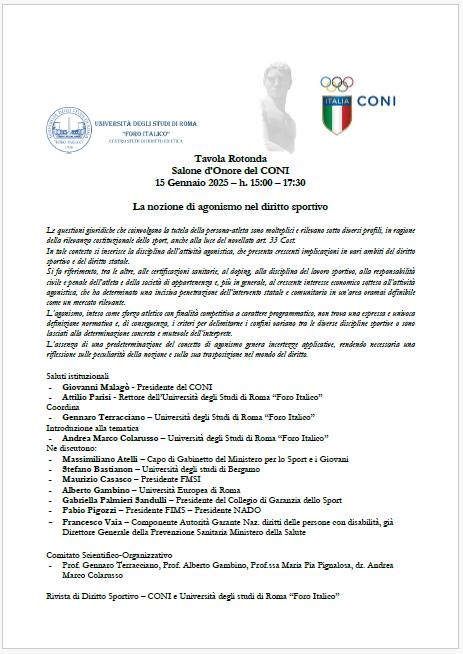
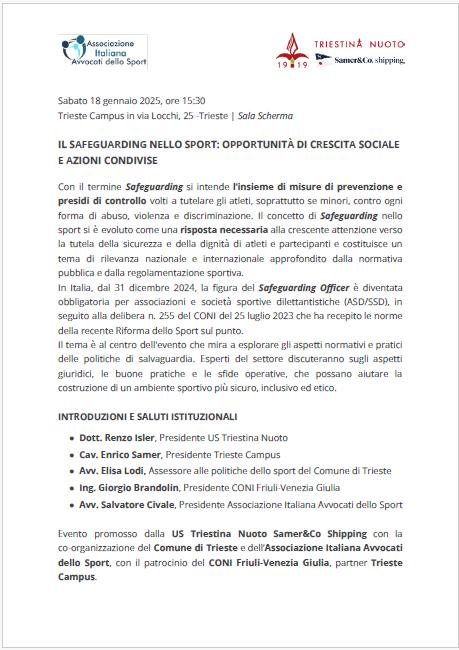
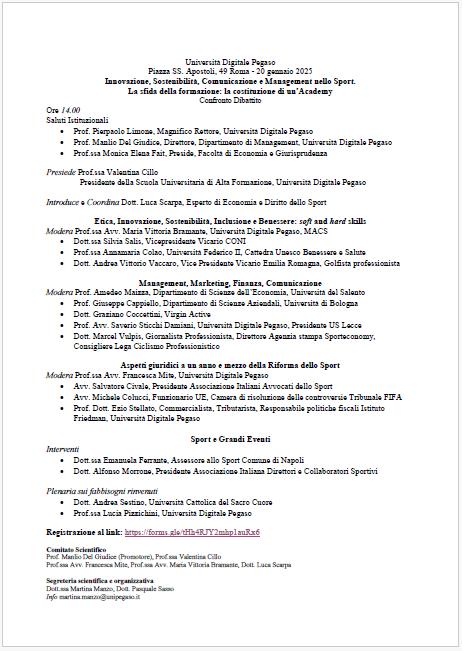
Sport&EU

PUBBLICAZIONI

V EDIZIONE
4 OTTOBRE 2024

Tomo I: ISBN 978-88-943373-5-8
Tomo II: ISBN 978-88-943373-6-5
Opera completa, 1.094 pagine, Euro 100,00
(spese di spedizione in Italia incluse)
INDICE TOMO I
INDICE TOMO II
FLYER
TEASER
MODULO D'ORDINE

SLPC 2024
ISBN 978-88-943373-7-2
FLYER
TEASER
ORDER FORM
International Sports Law and Policy Bulletin 1/2024
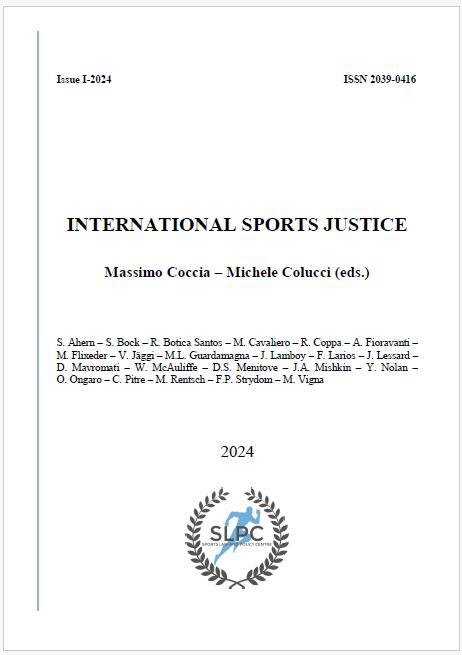
ISBN 978-88-943373-4-1
January 2024, 860 pages
-
FLYER
-
ORDER FORM
International Encyclopaedia of Sports Law
Edited by M. Colucci







 Professore a contratto nel settore GIUR-01/A (Diritto privato) presso il Dipartimento di Giurisprudenza dell’Università di Siena. È altresì docente esperto presso la Scuola dello Sport del CONI. Ha conseguito il titolo di Dottore internazionale di ricerca in Diritto dei consumi nell’Università di Perugia ed in Diritto privato nell’Università di Salamanca, nell’ambito del programma congiunto tra i due atenei. Membro di varie Associazioni italiane e straniere nonché della Direzione della Rivista di Diritto ed Economia dello Sport.
Professore a contratto nel settore GIUR-01/A (Diritto privato) presso il Dipartimento di Giurisprudenza dell’Università di Siena. È altresì docente esperto presso la Scuola dello Sport del CONI. Ha conseguito il titolo di Dottore internazionale di ricerca in Diritto dei consumi nell’Università di Perugia ed in Diritto privato nell’Università di Salamanca, nell’ambito del programma congiunto tra i due atenei. Membro di varie Associazioni italiane e straniere nonché della Direzione della Rivista di Diritto ed Economia dello Sport.
 Professoressa Associata, abilitata alle funzioni di Professore Ordinario, di Istituzioni di Diritto Romano e Fondamenti del Diritto Europeo presso il Dipartimento di Diritto Privato e Storia del Diritto dell’Università degli Studi di Milano.
Professoressa Associata, abilitata alle funzioni di Professore Ordinario, di Istituzioni di Diritto Romano e Fondamenti del Diritto Europeo presso il Dipartimento di Diritto Privato e Storia del Diritto dell’Università degli Studi di Milano.
 Professore Associato di Diritto privato presso l’Università Digitale Pegaso e
componente della Corte Sportiva nazionale della FIGC.
Professore Associato di Diritto privato presso l’Università Digitale Pegaso e
componente della Corte Sportiva nazionale della FIGC.
 Professore incaricato di Procedura Penale e Criminologia presso l’Università
Digitale Pegaso e Ph.D. candidate in Gestione finanziaria di impresa e prevenzione della crisi
presso l’Universitas Mercatorum. Giudice Sportivo Nazionale della FIDAL e Componente
Organismo di Vigilanza d.lgs. n. 231/01 Salernitana 1919.
Professore incaricato di Procedura Penale e Criminologia presso l’Università
Digitale Pegaso e Ph.D. candidate in Gestione finanziaria di impresa e prevenzione della crisi
presso l’Universitas Mercatorum. Giudice Sportivo Nazionale della FIDAL e Componente
Organismo di Vigilanza d.lgs. n. 231/01 Salernitana 1919.
 Attorney-at-law, name Partner of the boutique law firm Studio Civale, founding member and President of the Italian Sports Lawyers Association (AIAS). He is selected pro bono lawyer at FIFA and UEFA Legal Aid project and Arbitrator at ECA - European Handball Federation Court of Arbitration (Wien, Austria). He is appointed arbitrator in the Arbitration Panels of Italian Serie A League established by the Italian football FA (FIGC), player’s union (AIC) and the league (LNPA). He is Vice Director and member of the Editorial Board of the Italian Review of Sport Law and Economy (RDES) and author of various publications, book chapters and articles on sports law.
Attorney-at-law, name Partner of the boutique law firm Studio Civale, founding member and President of the Italian Sports Lawyers Association (AIAS). He is selected pro bono lawyer at FIFA and UEFA Legal Aid project and Arbitrator at ECA - European Handball Federation Court of Arbitration (Wien, Austria). He is appointed arbitrator in the Arbitration Panels of Italian Serie A League established by the Italian football FA (FIGC), player’s union (AIC) and the league (LNPA). He is Vice Director and member of the Editorial Board of the Italian Review of Sport Law and Economy (RDES) and author of various publications, book chapters and articles on sports law.
 Sports lawyer, member of the Legal Affairs Commission AIA-FIGC, Member of the Arbitrators List of the Economic Disputes Commission of the Italian Basketball Federation (FIP). Author of publications, book chapters and articles on sports law.
Sports lawyer, member of the Legal Affairs Commission AIA-FIGC, Member of the Arbitrators List of the Economic Disputes Commission of the Italian Basketball Federation (FIP). Author of publications, book chapters and articles on sports law.
 Sports lawyer, Associate at Coccia De Angelis y Associati (CDAA) in Rome.
Sports lawyer, Associate at Coccia De Angelis y Associati (CDAA) in Rome.








